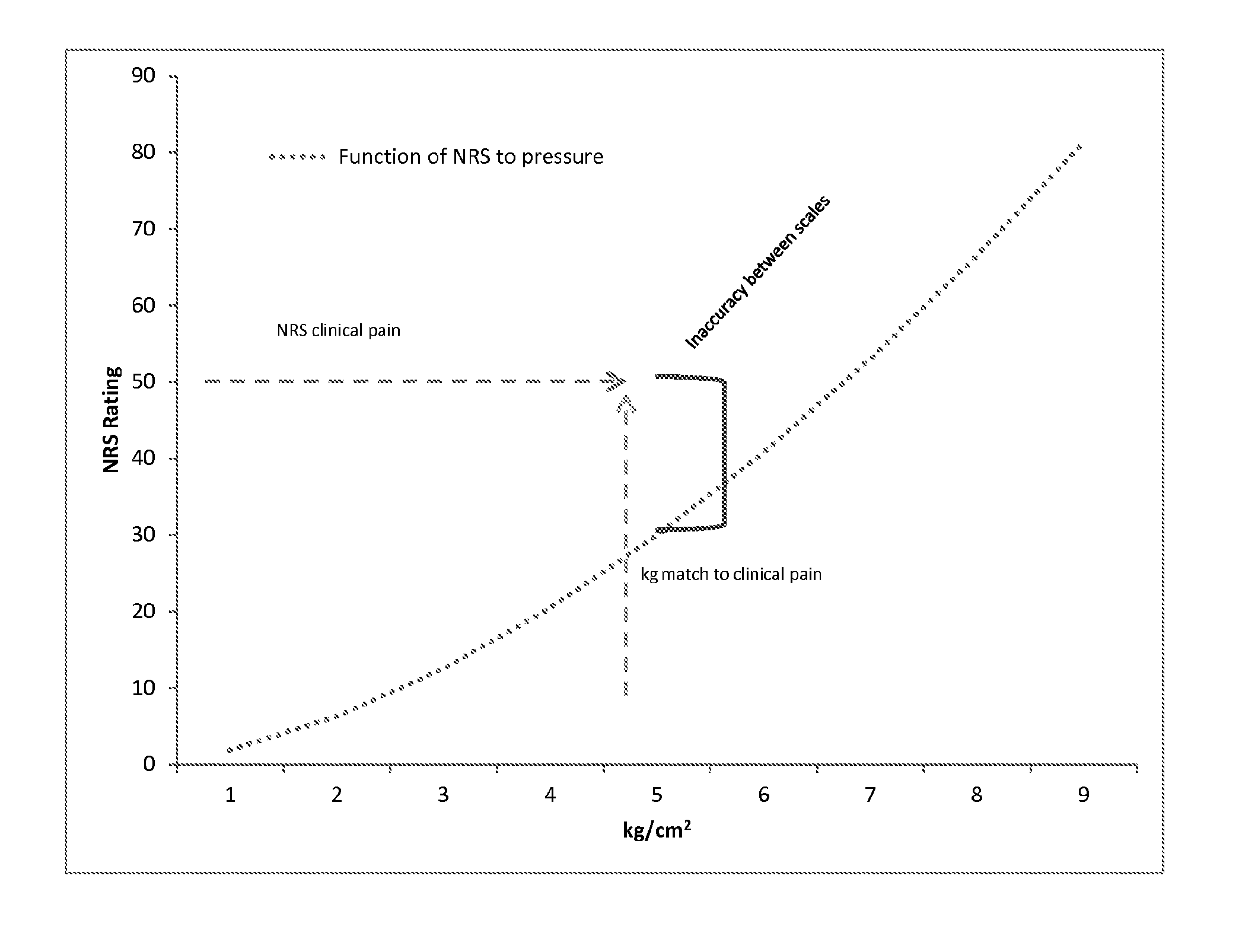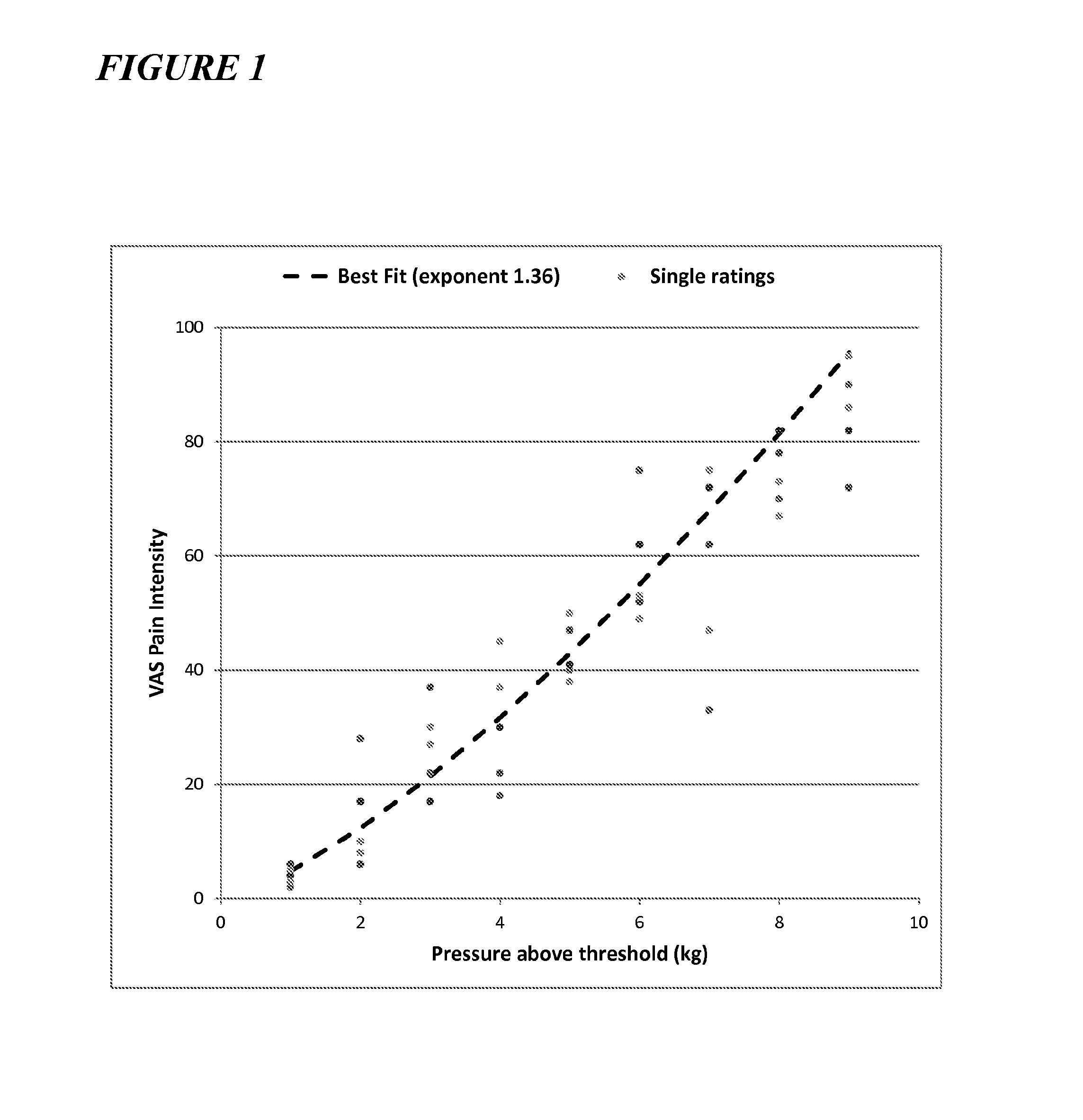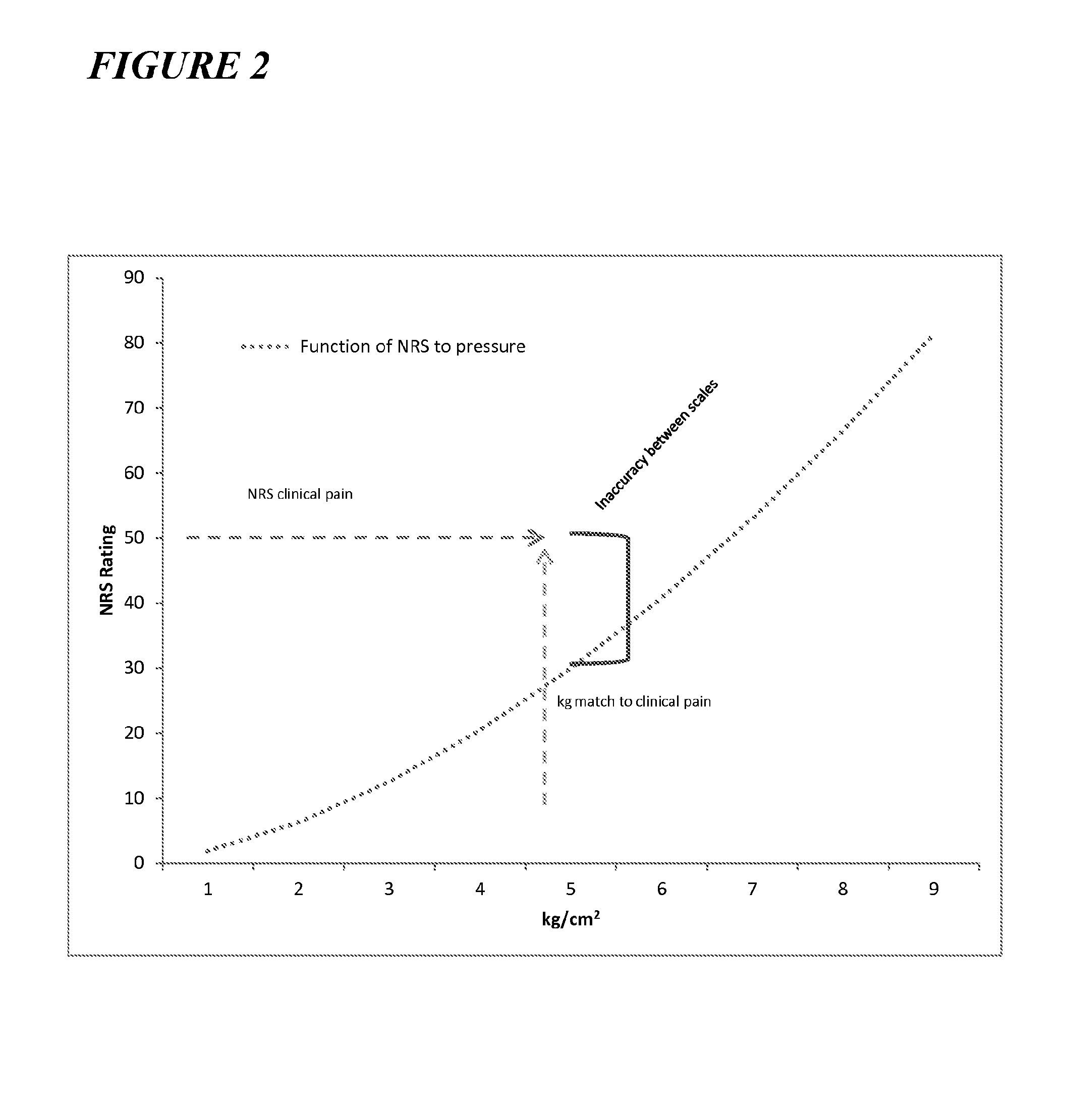Training methods for improved assaying of clinical symptoms in clinical trial subjects
a clinical trial and clinical trial technology, applied in the field of clinical trial subjects training methods for improving clinical symptoms assaying, can solve the problems of reducing the probability of false negative trials, double-blind clinical trials for analgesics have often failed, and the cost and time to conduct the trial can be reduced, so as to improve the statistical power and accuracy of clinical trial results, improve the accuracy of clinical symptoms, and improve the accuracy of pain reporting of subjects.
- Summary
- Abstract
- Description
- Claims
- Application Information
AI Technical Summary
Benefits of technology
Problems solved by technology
Method used
Image
Examples
Embodiment Construction
I. Definitions
[0031]As used herein, the term “natural index pain” or “index pain” refers to the natural pain perceived by a subject as a result of a disease / disorder, injury and / or surgical procedure. Exemplary index pain includes, without limitation, knee pain from osteoarthritis.
Clinical Symptom Reporting Training Overview
[0032]The present invention provides methods of training a subject to more accurately report the clinical symptoms of a condition. The reporting of any clinical symptom that can be sensed by a subject can be trained using the methods of the invention, including without limitation, pain, migraine, urinary frequency, asthma, and anxiety. In certain embodiments, the clinical symptom is pain (e.g., Painful Diabetic Neuropathy).
[0033]In certain embodiments, the methods of the invention involve Drug / Placebo Administration to increase the participants' ability to discriminate between active and placebo treatments. The Drug / Placebo Administration generally involves admin...
PUM
 Login to View More
Login to View More Abstract
Description
Claims
Application Information
 Login to View More
Login to View More - R&D
- Intellectual Property
- Life Sciences
- Materials
- Tech Scout
- Unparalleled Data Quality
- Higher Quality Content
- 60% Fewer Hallucinations
Browse by: Latest US Patents, China's latest patents, Technical Efficacy Thesaurus, Application Domain, Technology Topic, Popular Technical Reports.
© 2025 PatSnap. All rights reserved.Legal|Privacy policy|Modern Slavery Act Transparency Statement|Sitemap|About US| Contact US: help@patsnap.com



